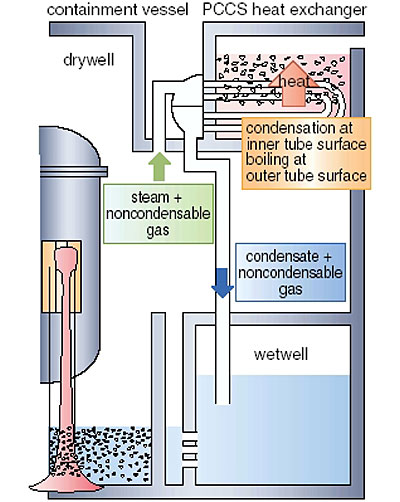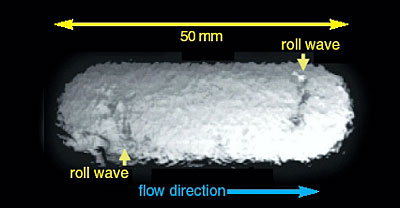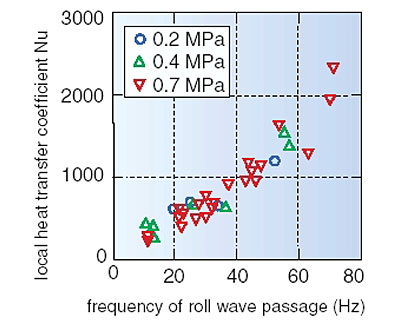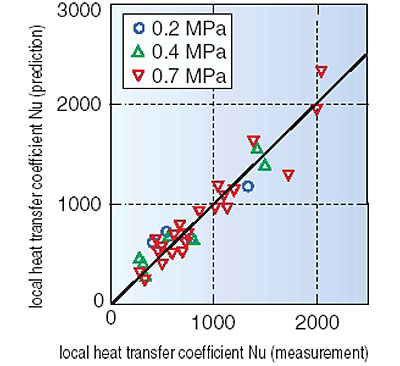Research for a new containment cooling system called "Passive Containment Cooling System (PCCS)" is underway for next generation BWRs. PCCS prevents containment vessel from failure by overpressurization during a severe accident by utilizing natural forces such as gravity and the pressure difference resulting from steam generated during a high-temperature core melt. Decay heat is transferred to the atmosphere through the PCCS heat exchanger by in-tube steam condensation and boiling of pool water, retaining radioisotopes in the containment, as shown in Fig. 3-4.
We have developed a horizontal heat exchanger for the PCCS, which has the advantages of being earthquake-proof, economical, efficient, and easy to maintain. Condensation heat transfer at the inlet region of the condenser tubes was studied in depth, as the heat transfer rate was found much higher than expected. We found that turbulent roll waves shown in Fig. 3-5 propagate on the liquid film in annular condensation flows at the tube inlet resulting in a significant heat removal rate by effective steam condensation, and that the heat transfer coefficient increases almost linearly with the frequency of the passing roll waves, as shown in Fig. 3-6. A new mechanistic condensation heat transfer model has been proposed based on this observation, and this has enabled us to estimate accurately the heat removal rate of the PCCS horizontal heat exchanger, as shown in Fig. 3-7.
Final design confirmation testing of this concept is currently underway at the ROSA/LSTF (Large Scale Test Facility) using a prototypical-scale model heat exchanger installed on LSTF. The tests have indicated that smooth and steady flow prevails in the primary side with uniform flow distribution among the condenser tubes, while multidimensional boiling flow appears in the secondary water pool.
|



